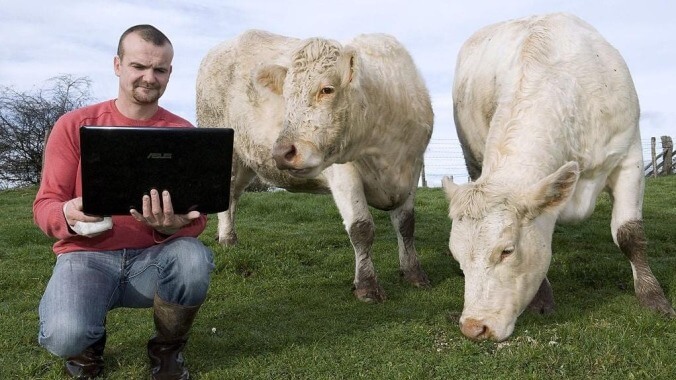Japanese scientists have 3D printed a square of lab-grown wagyu beef
The meat, made using cells taken from a cow's cheek tissue, isn't edible yet though

Last week, we were introduced to SquarEat, a meal delivery start-up that positioned its ability to compact food into little color-coded cubes as revolutionary. While we’re still pretty nonplussed by the prospect of replacing traditional mealtimes with regularly scheduled square consumption appointments, the possibility of actual breakthroughs in food science can still be exciting. For instance: Scientists at Japan’s Osaka University have now figured out how to 3D print wagyu beef.
Their work is described in an article from Vice that says the team’s findings “could provide a more sustainable alternative to the sought-after steak and other meat products” by allowing for the preparation of meat that doesn’t require nearly as many farms or as much livestock.
Led by professor Michiya Matsusaki, the researchers at Osaka University used satellite cells (related to muscle growth) and adipose stem cells from cow cheeks in combination with “artificial tendon tissue made of collagen” to 3D “bioprint” the beef. These components are pieced together into “rolls of wagyu beef fiber” and dyed red in a process that allows scientists to choose how lean or fatty their steak comes out. (This part is compared to building Lego, though it certainly sounds different than how we built plastic houses as kids.)
It’s exciting work but costly and still inedible “although Matsusaki said that a version of the beef ready for the dinner table would be made by the end of the year.” There are doubts, too, regarding whether this lab-grown wagyu would be able to scale up production in order to replace the real thing. Still, Matsusaki believes customers will be able to buy “small quantities” of the 3D-printed food by 2025.
Considering the environmental benefits associated with reducing the meat industry’s impact on the planet, we’re hopeful that this is only a sign of things to come. Just as long as the beef of the future doesn’t come delivered in little nutrient pucks sold by wide-eyed start-up companies that is.
Read more on the process over at Vice.
Send Great Job, Internet tips to [email protected]